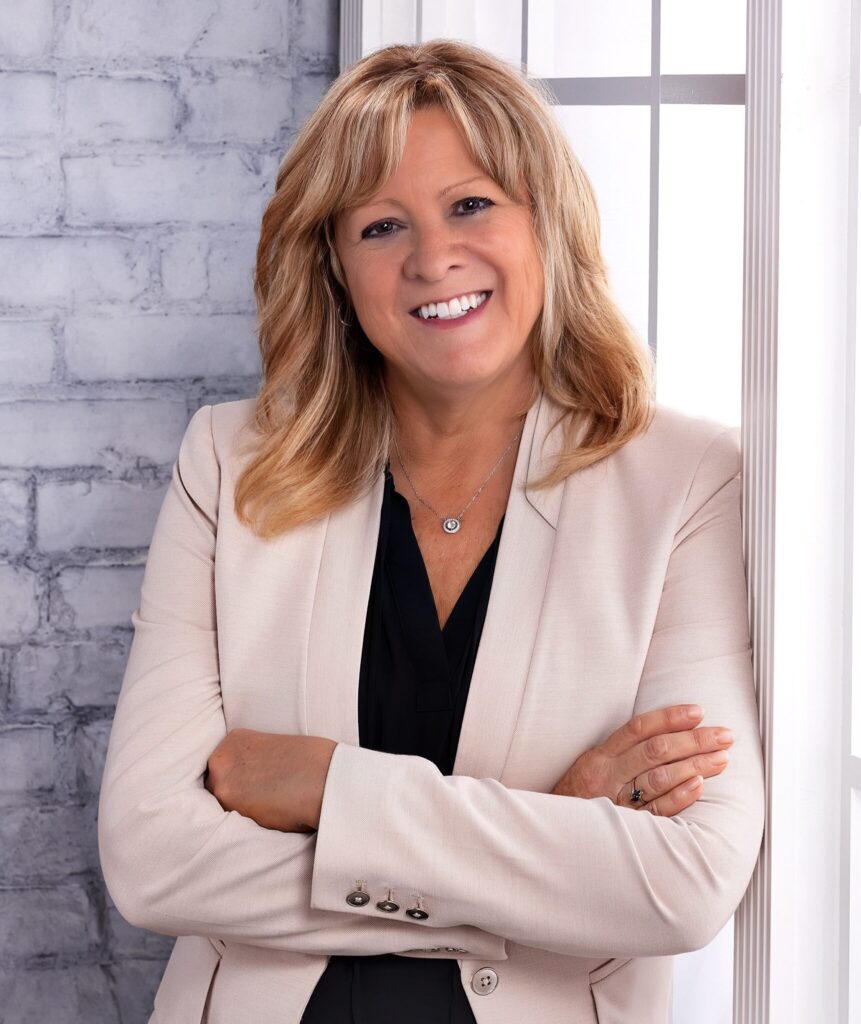 While Kevin Gage was hired to help the association get — and stay — ahead of the digital game, the new chief technology officer is finding a more pressing demand on his time: making sure TV broadcasters emerge unscathed from the FCC’s push to take back TV spectrum. But he’s also focused on helping develop technology that can lead to new business and revenue streams for broadcasters.
While Kevin Gage was hired to help the association get — and stay — ahead of the digital game, the new chief technology officer is finding a more pressing demand on his time: making sure TV broadcasters emerge unscathed from the FCC’s push to take back TV spectrum. But he’s also focused on helping develop technology that can lead to new business and revenue streams for broadcasters.
Full Plate For NAB’s New Tech Trend-Spotter
Kevin Gage believes the NAB hired him to be its chief technology officer last spring because it wanted a seer.
But Gage says not to expect to see him walking down Connecticut Avenue outside NAB’s Washington HQ sporting a “swami hat.” What the association wants — and what he intends to be — is not a clairvoyant, but somebody who “is used to being a little bit further out on the edge,” able to spot and understand trends in digital media and what they all means to broadcasting.
Supernatural or not, such a talent will no doubt come in handy as broadcasting continues to integrate itself into the digital media world. So far, however, Gage has not had much time for trend spotting.
Since his arrival in May, he says, he and many others at NAB have been concentrating on making sure TV broadcasters emerge unscathed from the FCC’s drive to reclaim TV spectrum and auction it off to wireless broadband providers. “That’s taken up most of the oxygen in this place.”
Gage says that Victor Tawil and Bruce Franca, two engineers who joined NAB in June when it absorbed the Association for Maximum Service Television, have been doing the heavy lifting in calculating the harm TV stations and consumers would suffer if the FCC wins unrestricted congressional authority to move ahead with its plan.
“My role really has been to try to put it in the language that non-engineers would understand,” Gage says. “Here’s what the real impact of auctioning off this much spectrum would be.”
Another critical project on Gage’s docket is mobile DTV. The Open Mobile Video Coalition, a consortium of broadcasters and vendors, and two groups of broadcasters — the Mobile Content Venture and the Mobile500 Alliance — are leading the effort to bring the technology to market.
But Gage says there is still an important role for NAB: improving reception of mobile DTV. “How do you get a better broadcast signal in that house? Can we find ways for our broadcasters to build a better platform so that a mobile DTV signal is stronger than ever before?”
Part of Gage’s job is overseeing FastRoad, a program under which the NAB is helping to fund technologies beneficial to broadcasting. But Gage would go beyond FastRoad to establish an R&D facility for TV and radio broadcasting.
“The broadcast labs is an excellent idea. There’s nothing that’s really firmed up at this point in time on it, but I definitely think the idea of a broadcast labs focusing on the broadcast industry and the collateral business is definitely something that we are looking at and considering.”
Some TV broadcast engineers would like to see a broadcast labs get started by developing a whole new DTV broadcasting system that could provide a wider range of services and better propagation than today’s 20-year-old ATSC system.
Gage is not against a next-generation DTV system, but believes there is a lot of untapped capability in the current system. “What we have is a very good and robust system to begin with.”
Gage likes the approach the Advanced Television Systems Committee is taking with its 2.0 initiative. “It’s about extending the use of what we can do with the current ATSC product platform while we look at learning from what we did in this digital transition — What were the strengths? What were the failures? — and then build that into the next generation broadcast platform.”
NAB hired Gage to run the science and technology department. The only problem was someone was already in that job: Senior Vice President Lynn Claudy.
Actually, Gage hopes that won’t be a problem and says he expects Claudy will stay on, noting that the department’s workload and responsibilities have increased with the MSTV merger. “Lynn is a great resource and a valuable member of the technology team.”
Gage, 49, has a background that suggests that he just might be able to look around the technological bend. For much of his career, he was involved with digital media and business development, mainly at Warner Bros., but also for two years at NBC Universal.
He joined Warner Bros. in Los Angeles in 1996 to help build a production facility for what was then the latest video medium: the DVD. “There wasn’t any software or hardware out there at the time to make a DVD.”
That experience, particularly with MPEG-2, led him to the door of The WB, the broadcast network that Warner Bros. and Tribune Broadcasting launched in January 1995. There, he worked on a system that allowed for local ad insertion for the network’s cable affiliates in small markets, The WB 100+.
Among other things, that job served as his introduction to broadcasting as well as to NAB — not the association, but the group’s annual tech show. “I was like a kid in a candy shop going into the show and going into the courses,” Gage says. “That was really a wonderful time for me.”
In 2000, he took his growing knowledge of digital media to Warner Music Group, which, like the rest of the recording industry, was just beginning to comprehend how traumatic and damaging the rise of the Internet and file-sharing would be for its business.
He was assigned to a consortium of several companies, code named DMX, that was trying to create a new digital music platform. In-fighting caused the consortium to break up, but out of it Apple and Warner Music got together on a new project that eventually led to iTunes.
“I would spend time with some of the Cupertino folks and on the back of napkins we started trying to take what we had devised within DMX and figure out how that could be applied to Apple technology. We eventually came up with a straw man. Apple showed a demo of how that would work and that gave us confidence that they could put the technology together to actually launch the product. “
In 2005, Gage jumped to NBCUniversal, which was trying to sort through the digital challenges and opportunities just as all the multimedia companies were. But Gage said it was a “turbulent time” for the company. Not only did his immediate bosses keep changing, so did those at the highest levels of the corporation, including Robert Wright, who was replaced as CEO by Jeff Zucker in early 2007.
Despite the churn, Gage believes he made a mark by helping to convince the company to focus of selling downloads of TV show rather than movies. Given the limited broadband capabilities of most consumers at the time, movies would simply take too long to download and would not satisfy the need for instant gratification.
Also, remember, the iPhone wasn’t out yet; it was all about iPods, he says. “A Cinemascope movie on an iPod wouldn’t look very good, but you could actually create an intimate experience with a 4×3 TV show on an iPod.”
After Gage left NBC Universal in 2007, he spent a year consulting for Warner Music and then two years at ASCAP as senior vice president, planning and digital development.
Gage got a late start on his career. At Penn State, the six-foot-three, 225 pounder played rugby at the club level and when he graduated with a B.S. in 1984 he chose to “knock around” for several years as a rugby player in leagues that were not professional, but not exactly amateur either. He played one season in New Zealand for room, board and a paycheck for a job that required little work.
It wasn’t until he was 35 and contending with bad knees that he finally gave up the sport for more sedate athletic pursuits like golf and to focus more fulling on the career.
As a Penn State alum, he follows the fortunes of the Nittany Lions, but his principal sports interest these days is in soccer, as a fan of the international teams and of his two girls and boy, who are avid players.
Traditionally, the NAB’s chief technologist’s principal duty has been to help shape the association’s policy goals and supply the technological underpinnings to achieve them.
Gage is comfortable with that role, but he believes he can go way beyond it to help develop new businesses.
“There is a lot of really interesting technology,” he says. “With the thought leaders that we have, and the engineers that we have, we are asking what more can we do to help drive these new technologies into the marketplace so that our business leaders could actually build good models off of them.”
Leading broadcasters to new revenue would be quite an accomplishment for Gage, even if he can’t actually see into the future.


























Comments (1)
Karen Golove says:
April 17, 2012 at 7:00 am
Dear Sir/Madam,
I have the pleasure to brief you on our Data Visualization software
“Trend Compass”.
TC is a new concept in viewing statistics & trends in an animated way
by displaying in one chart 5 axis (X, Y, Time, Bubble size & Bubble
color) instead of just the traditional X and Y axis. Discover trends
hidden in spreadsheets. It could be used in analysis, research,
presentation etc. In different business sectors, to name a few we
have Deutsche Bank, NBC Universal, RIM, Vanguard Institutional
Investor, Ipsos, Princeton University as our clients.
Link on Drilling feature (Parent/Child) – Just double-click on any bubble:
http://www.epicsyst.com/test/v2/drilling/
NBC presentation on TED using Trend Compass exported Videos on CNN
Money/Fortune:
http://tech.fortune.cnn.com/2010/12/21/from-laughing-to-judging-in-fifty-years-the-evolution-of-televised-emotion/
Link on our new Geographical Trend Compass (Earthquake in Japan – Mag
vs Depth vs Time):
http://www.epicsyst.com/test/v2/japan-earthquake
Link on Ads Monitoring on TV Satellite Channels.
http://www.epicsyst.com/test/v2/tv-monitor/
Link on UK Master Card vs Visa performance :
http://www.epicsyst.com/test/v2/mastercard_vs_visa/
Links on Funds:
http://www.epicsyst.com/test/v2/best_exchange_traded_funds/
http://www.epicsyst.com/test/v2/us_insurance_funds/
http://www.epicsyst.com/test/v2/aaim_fund_performance/
Link on other KPIs :
http://www.epicsyst.com/test/v2/hospital_performance/
Link on Chile’s Earthquake (Feb 27th 2010):
http://www.epicsyst.com/test/v2/EarthQuakeinChile/
Link on weather data :
http://www.epicsyst.com/test/v2/aims/
Bank link to compare Deposits, Withdrawals and numbers of Customers
for different branches over time:
http://www.epicsyst.com/test/v2/bank-trx/
Misc Examples :
http://www.epicsyst.com/test/v2/airline/
http://www.epicsyst.com/test/v2/stockmarket1/
http://www.epicsyst.com/test/v2/football/
http://www.epicsyst.com/test/v2/swinefludaily/
http://www.epicsyst.com/test/v2/babyboomers/
Princeton University project on US unemployment :
http://www.epicsyst.com/main3.swf
A video presentation by Professor Alan Krueger Bendheim Professor of
Economics and Public Affairs at Princeton University and currently
Chief Economist at the US Treasury:
http://epicsyst.com/trendcompass/princeton.aspx?home=1
You can download a trial version. It has a feature to export
EXE,PPS,HTML and AVI files. The most impressive is the AVI since you
can record Audio/Video for the charts you create.
http://www.epicsyst.com/TrendCompass/FreeVersion/TrendCompassv1.2.2.zip
Video on Trend Compass:
http://www.youtube.com/watch?v=gzDCGB8xBq4&feature=related
Since we already develop 3D Virtual Reality applications, please find
below a link on a prototype for a new 3D VR Trend Compass application:
http://www.youtube.com/watch?v=ueqULRUvikg&feature=related
Regards.
Ashrafwagdy
Trend Compass Team
Epic Systems
http://www.epicsyst.com